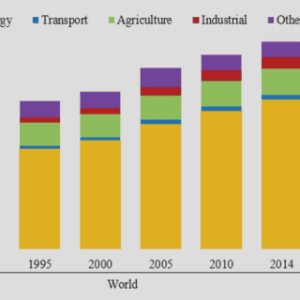(Downloads - 0)
For more info about our services contact : help@bestpfe.com
Table of contents
1. INTRODUCTION
1.1. Background
1.1.1. Geographical context
1.1.2. Tourism trends: globally, and in Sri Lanka
1.1.3. Effects of increased tourism
1.1.4. Sustainability in the lodging industry
1.1.5. Recurring themes within sustainable tourism in the lodging industry
1.2. Problem formulation
1.3. Structure of the thesis
2. PURPOSE AND RESEARCH QUESTIONS
2.1. Purpose
2.2. Research questions
3. THEORETICAL PRE-UNDERSTANDING
3.1. The three most prevalent themes
3.1.1. Transformational leadership
3.1.2. Stakeholder management
3.1.3. Culture
3.2. Sustainable Lodging Manager Maturity Model, SLM3
3.2.1. Sustainable Project Management Maturity Model, SPM3
3.2.2. Sustainable Tourism Model, STM
4. METHODOLOGY
4.1. Ontology and epistemology
4.2. The research design
5. METHOD
5.1. Primary data collection
5.1.1. Sampling design
5.1.2. Semi-structured interviews
5.1.3. SLM3
5.2. Data analysis
5.2.1. Transformational leadership
5.2.2. Stakeholder management
5.2.3. Culture
5.3. Validity and reliability
5.3.1. Semi-structured interviews
5.3.2. Data analysis
5.4. Limitations
5.4.1. Externally imposed limitations
5.4.2. Delimitations
5.5. Ethical considerations
5.5.1. Ethics and the semi-structured interviews
6. RESULTS
6.1. General sample data
6.1.1. General information of lodgings (sample data) extracted from interviews
6.1.2. SLM3 results overview
6.2. Transformational leadership
6.2.1. The theory, the four factors and method
6.2.2. Idealized Influence or Charisma
6.2.3. Inspirational Motivation
6.2.4. Intellectual Stimulation
6.2.5. Individual Consideration
6.2.6. General summary
6.3. Stakeholder management
6.3.1. The model, the three levels and the method
6.3.2. Organizational stakeholders (internal)
6.3.3. Economical stakeholders (external)
6.3.4. Societal stakeholders (external)
6.3.5. General summary
6.4. Culture
6.4.1. Theory, categories and method
6.4.2. Power distance
6.4.3. Individualism versus Collectivism
6.4.4. Femininity versus Masculinity
6.4.5. Long term orientation
6.4.6. General summary
6.5. The SLM3
7. DISCUSSION
7.1. Research question one
7.1.1. Thematic connections
7.2. Research question two
8. CONCLUSION
8.1. Concluding remarks
8.2. Contributions
8.2.1. Contributions to theory
8.2.2. Contributions to practice
8.2.3. Contributions to research
8.3. Further research
8.3.1. Conceptual framework
8.3.2. Future research in general
8.4. Conflict of interest
REFERENCES
APPENDIX



